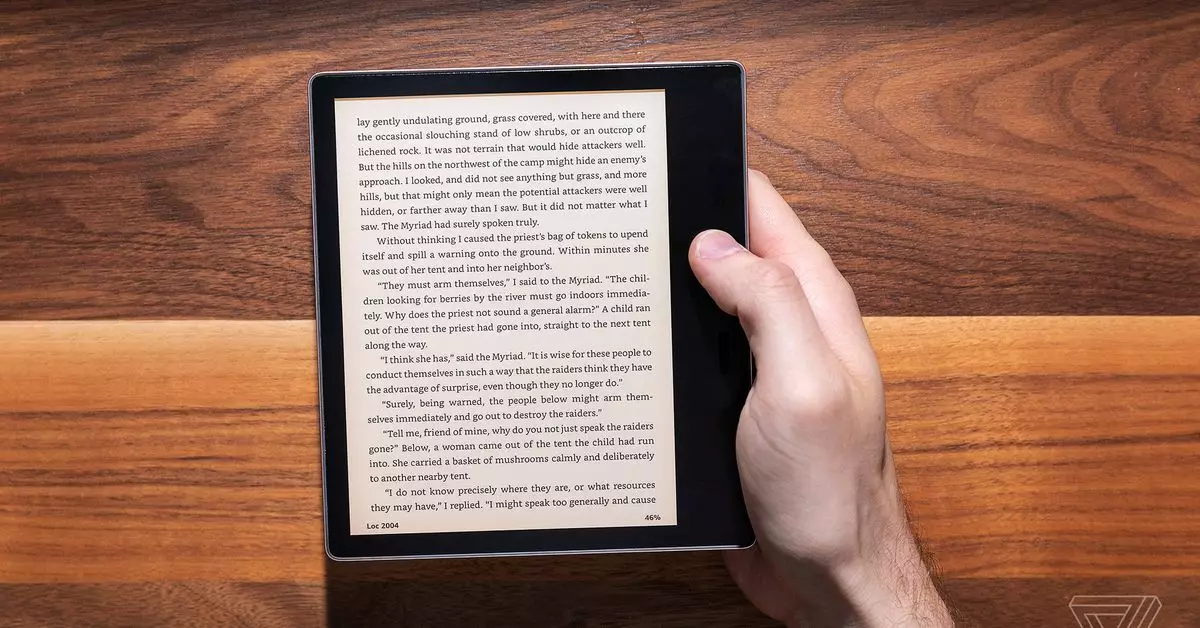The discontinuation of the Kindle Oasis marks a significant turning point in Amazon’s approach to e-reader design. As technology evolves and consumer preferences shift, Amazon has opted to phase out the Kindle Oasis, the last model in its lineup to boast physical page-turn buttons. This decision reflects not only a change in product offerings but also an alignment with the broader trends in user interface design, where touchscreens dominate and traditional mechanisms are becoming obsolete.
In a recent statement to The Verge, Amazon spokesperson Devon Corvasce confirmed that once existing stock of the Kindle Oasis is sold out, it will no longer be restocked. This is a clear indication of Amazon’s commitment to a fully touchscreen-oriented lineup, catering to modern consumer habits. With most users now accustomed to touch-based navigation, the company is pivoting to designs that resonate more closely with current expectations, despite the Oasis’s unique features that appealed to a dedicated niche of readers.
Launched in 2016, the Kindle Oasis was introduced as a premium e-reader tailored for avid book lovers. It distinguished itself with physical page-turn buttons and an ergonomic design, making it comfortable for long reading sessions. Amazon updated the Oasis in 2017 and 2019, but the memories of its innovative features remain fresh among loyal users.
The Kindle Oasis catered to a demographic that valued the tactile feel of turning pages, but as time progressed, the supremacy of touchscreen devices became more pronounced. Despite retaining some loyal customers, the lack of significant updates to the Oasis since its last refresh in 2019 suggested that it might be on borrowed time. With today’s technological advancements, users are more inclined to seek out features such as additional screen size and improved capabilities, which the latest models offer.
Amazon’s announcement of a refreshed Kindle lineup comes as no surprise, considering the shift in focus towards devices that feature larger screens and color displays. The new offerings include an enhanced Kindle Paperwhite with an expanded screen and a second-generation Kindle Scribe. However, the absence of physical buttons in these new models signals a complete transition for Amazon, aiming to meet evolving consumer preferences while also eliminating the complexities associated with older technology.
This latest lineup emphasizes sophisticated touch-responsive elements that enhance user experience, even if it sacrifices the nostalgic comfort that the Oasis once offered. Although some readers may mourn the loss of the Kindle Oasis, it is evident that Amazon is carefully crafting a future where technology integrates seamlessly into everyday reading habits.
The Kindle Oasis may be reaching the end of its life cycle, but its legacy within the e-reader market remains impactful. It served as a bridge for many readers transitioning from print to digital formats, highlighting the importance of tactile interaction in enhancing reading experiences. As the e-book landscape continues to evolve, the discontinuation of the Oasis might serve as a reminder of how quickly technology can change. Readers will have to adapt to a world where touch gestures rule the experience, leaving behind cherished moments of physical interaction with their devices.

